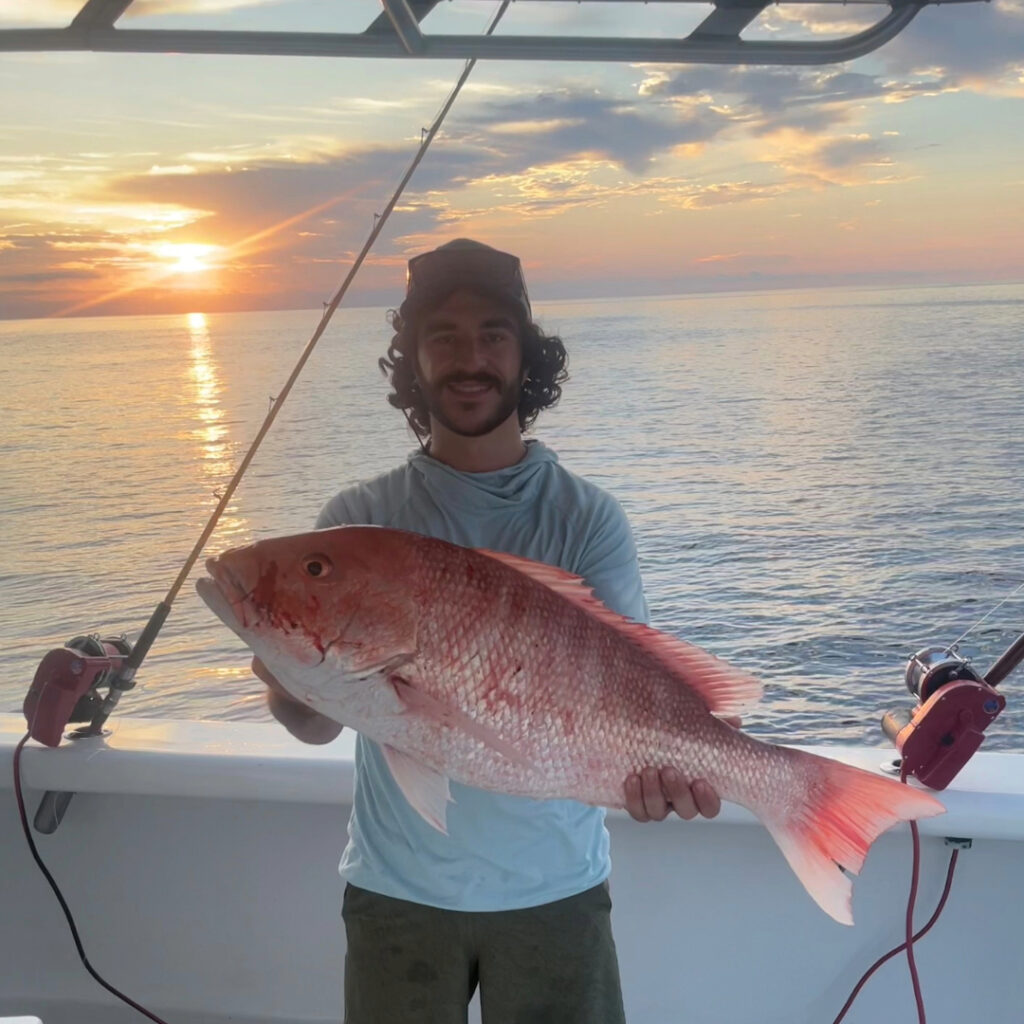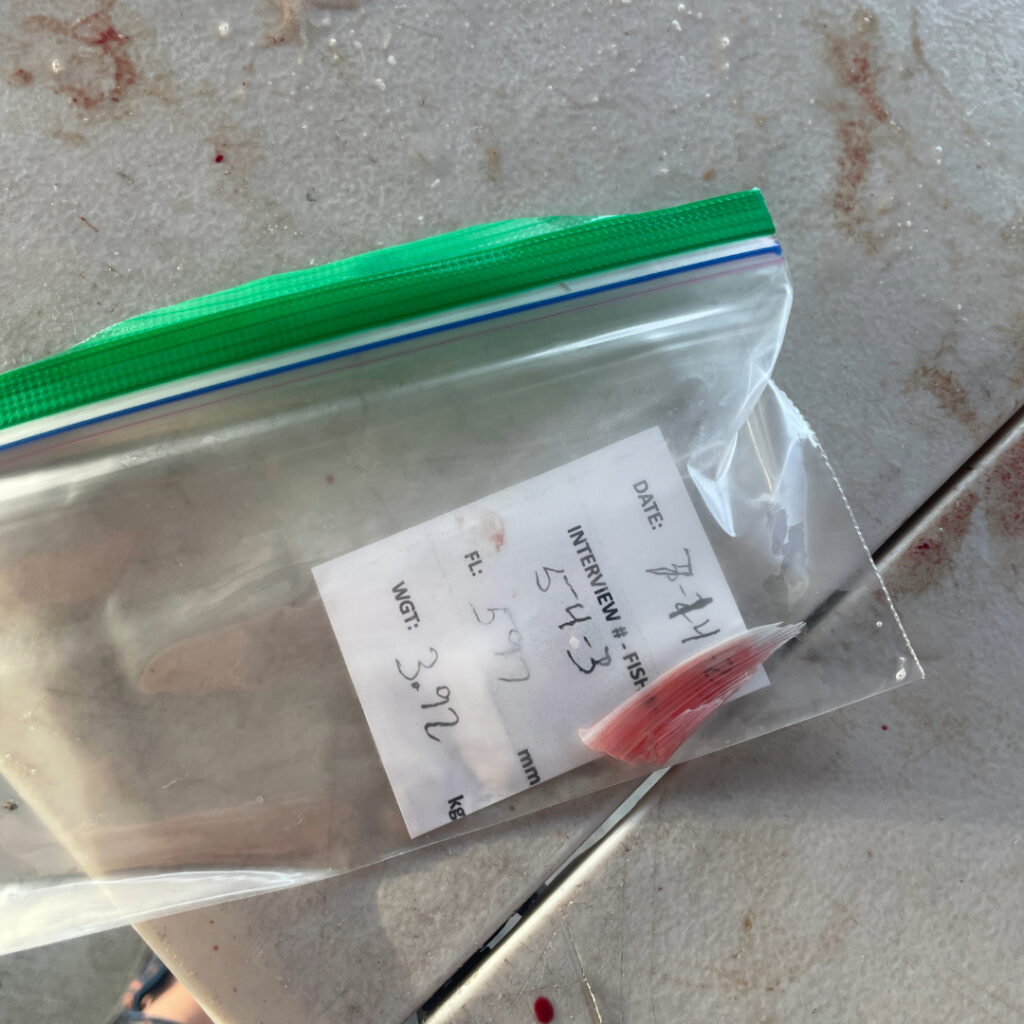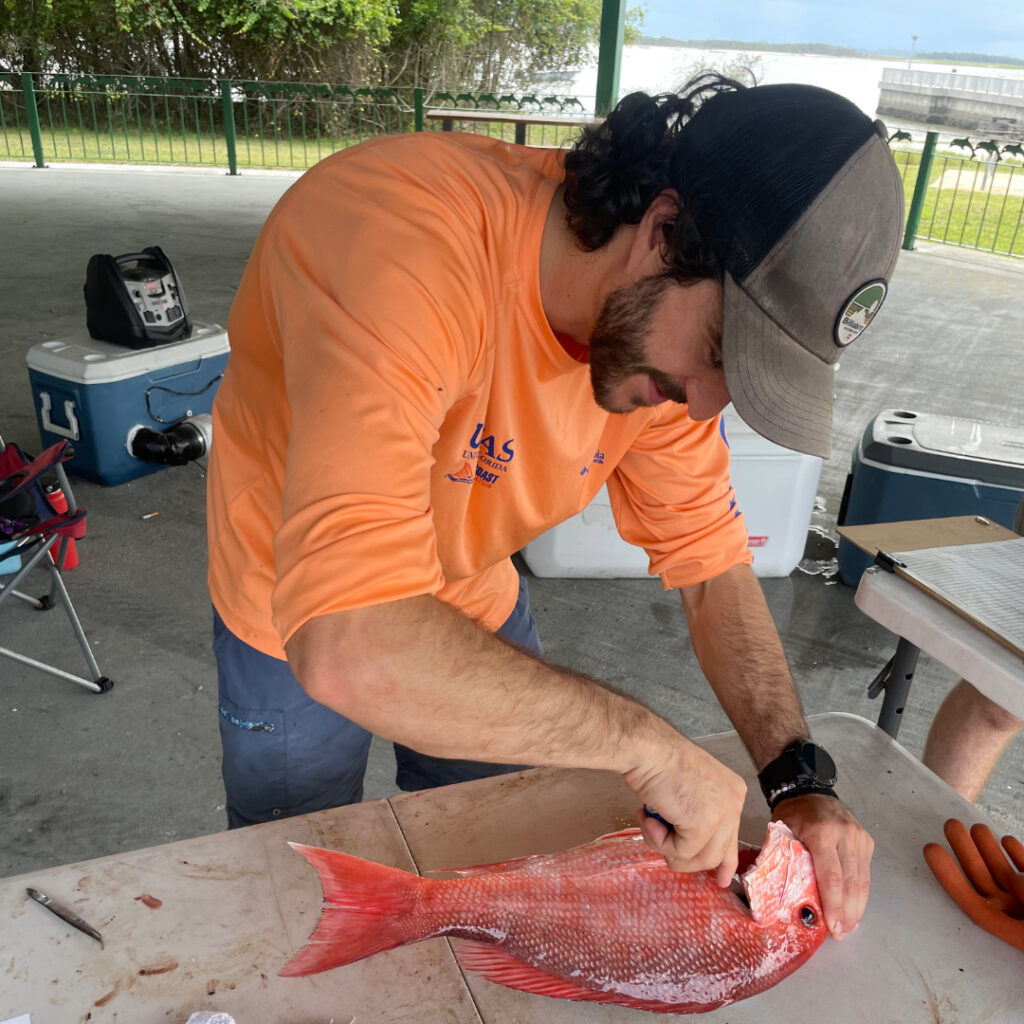 Liam Kehoe and his family are passionate about fishing. If he has a free weekend, chances are he’s fishing, either in murky back waters for redfish or mountain streams for trout. Fishing runs in his DNA, and he’s channeling that family connection into his research. As a third-year PhD student in the University of Florida’s Fisheries and Aquatic Sciences program, Kehoe is exploring novel genetic and tagging tools to better understand the population dynamics of red snapper in the Atlantic.
Liam Kehoe and his family are passionate about fishing. If he has a free weekend, chances are he’s fishing, either in murky back waters for redfish or mountain streams for trout. Fishing runs in his DNA, and he’s channeling that family connection into his research. As a third-year PhD student in the University of Florida’s Fisheries and Aquatic Sciences program, Kehoe is exploring novel genetic and tagging tools to better understand the population dynamics of red snapper in the Atlantic.
Red snapper, a prized catch throughout the Southeast by commercial and recreational groups, has faced overharvesting since the 1980s. To allow the population to recover, fishery managers have implemented limited seasons of 1 to 2 days annually. However, even with the limited season in the summer, there is a high level of out-of-season by-catch, drawing the necessity for improved monitoring and management of the species.
With support from the National Marine Fisheries Service (NMFS)–Sea Grant Fellowship Program and faculty advisors Dr.’s Dave Chagaris and Will Patterson, Kehoe is exploring methods to estimate the abundance of fish populations independent of traditional stock assessments using genetic tagging, otherwise known as close-kin mark-recapture (CKMR). In commonly used mark-recapture techniques, individuals are captured, physically tagged, and released into the population. Individuals are then “recaptured” and the proportion founded with tags are recorded. Compared to conventional tagging approaches, CKMR uses DNA samples to identify familial relationships, or “kin”, from one sampling event, thus eliminating the need for recapture.

DNA sample from red snapper. Image by Liam Kehoe.
While initially interested in engineering, Kehoe became intrigued by quantitative fisheries science after taking an introductory fisheries management course and realizing the impact of integrating engineering concepts and fisheries research.
“With my fascination for problem solving and newfound skills of computer modeling I was eager to find an application. Seeing how those concepts apply to sustainably managing marine resources was eye-opening, especially for something that I have a personal connection to and care about” says Kehoe.
Under a National Science Foundation at the Gulf of Marine Research Institute, Kehoe explored machine learning techniques and their implementation for species distribution modeling and migratory patterns for striped bass. This pivoted his work into quantitative fisheries research. He furthered his work with population dynamic modeling and ecosystem economic modeling for stone crabs with Chagaris and Dr. Frank Asche in a master’s program.
Funded by Florida Sea Grant, Kehoe’s stone crab research engaged stakeholders throughout the Gulf Coast of Florida, including commercial stone crabbers, to learn about stone crab history and investigate environmental and economic influences. This information was used to develop economic models that assessed the cost of a stone crab claws and estimated factors that influence the price, as well as develop a new population model for stone crabs that can be used for future management. The stone crab research solidified Kehoe’s to integrate population dynamics and fieldwork on red snapper in the US South Atlantic.
 Kehoe was also supported by the Aylesworth scholarship for three years, and the NMFS program will further the implementation and application of Kehoe’s research.
Kehoe was also supported by the Aylesworth scholarship for three years, and the NMFS program will further the implementation and application of Kehoe’s research.
The NMFS-Sea Grant Joint Fellowship Program in Population and Ecosystem Dynamics and Marine Resource Economics places Ph.D. students in research-based fellowships that provide funding and mentorship support for up to three years. Kehoe’s mentor, Dr. Kyle Shertzer, is a Research Mathematical Statistician at the NOAA Sustainable Fisheries Division. His involvement in assessing the management status of the red snapper will help guide Kehoe’s simulation and mark-capture modeling work throughout the fellowship.
“Receiving the NMFS award highlights the importance of this research and provides me with support beyond my university. The fellowship allows me to meet directly with these NOAA scientists, learn more about collaboration in science, explore future career opportunities, and solidify my career goals,” says Kehoe.